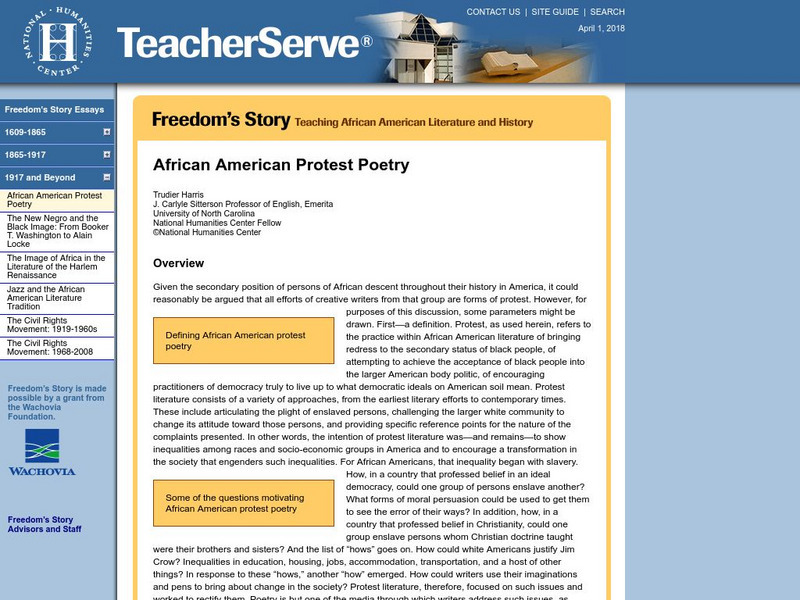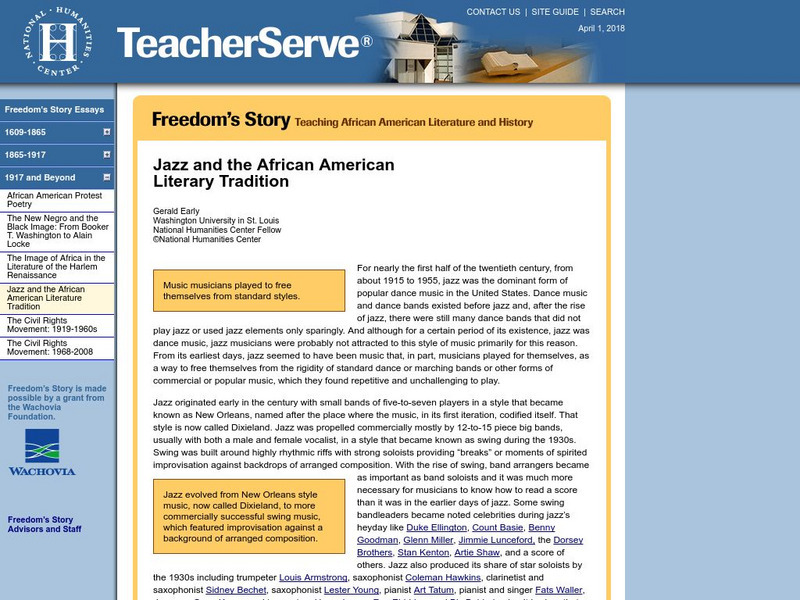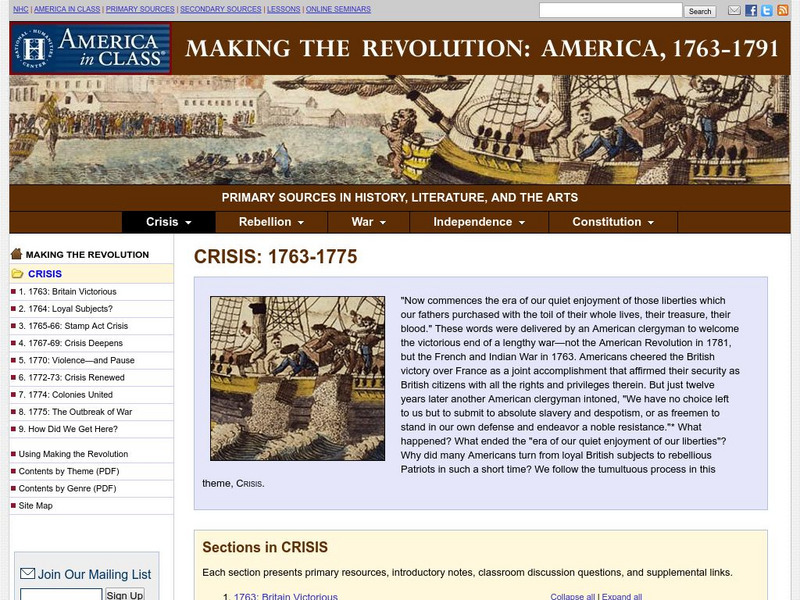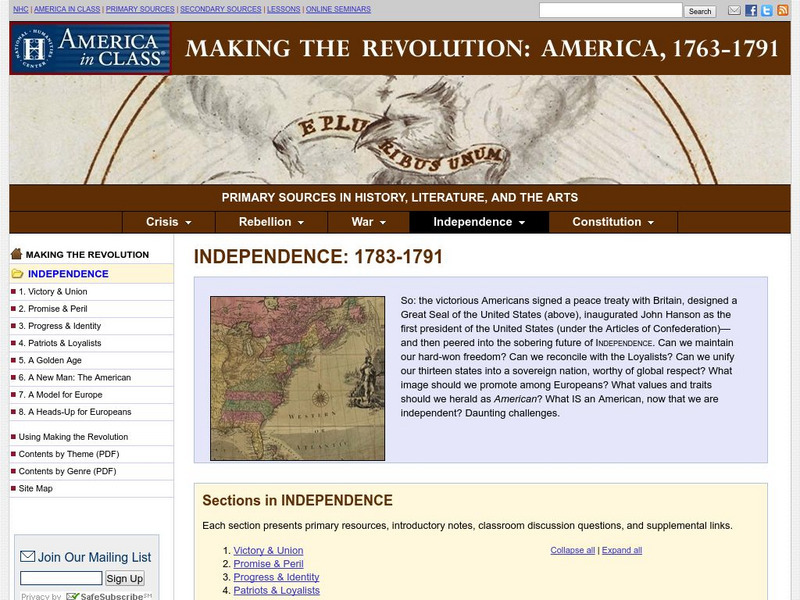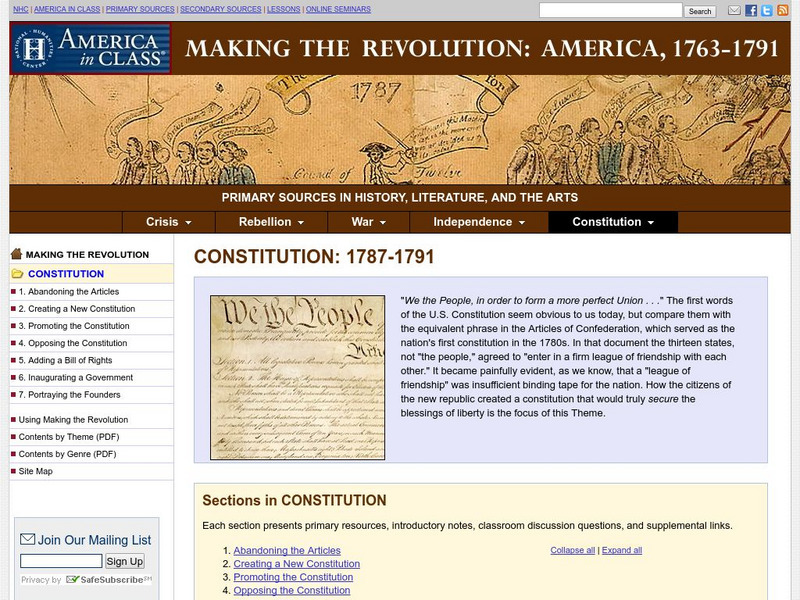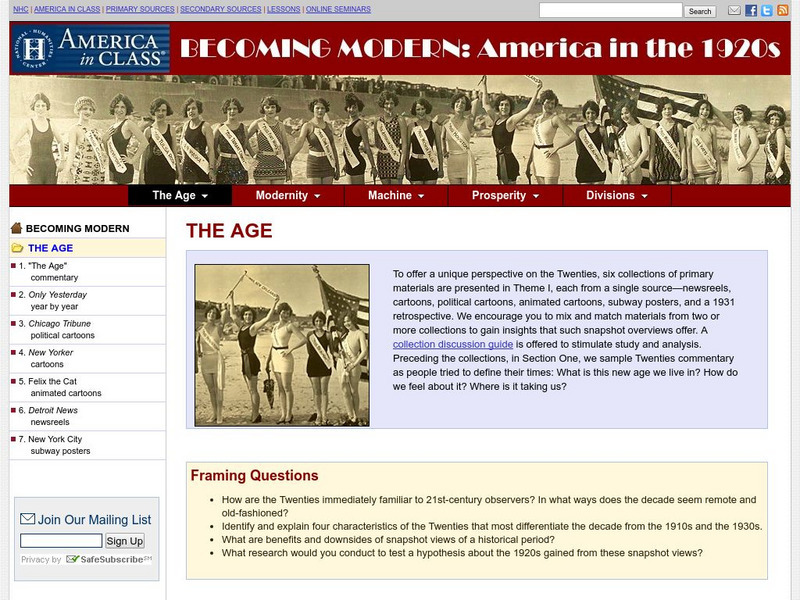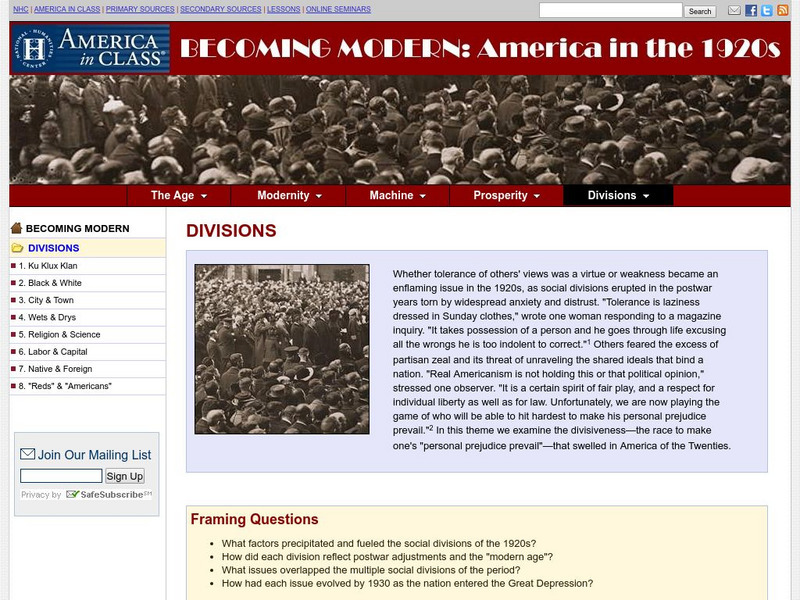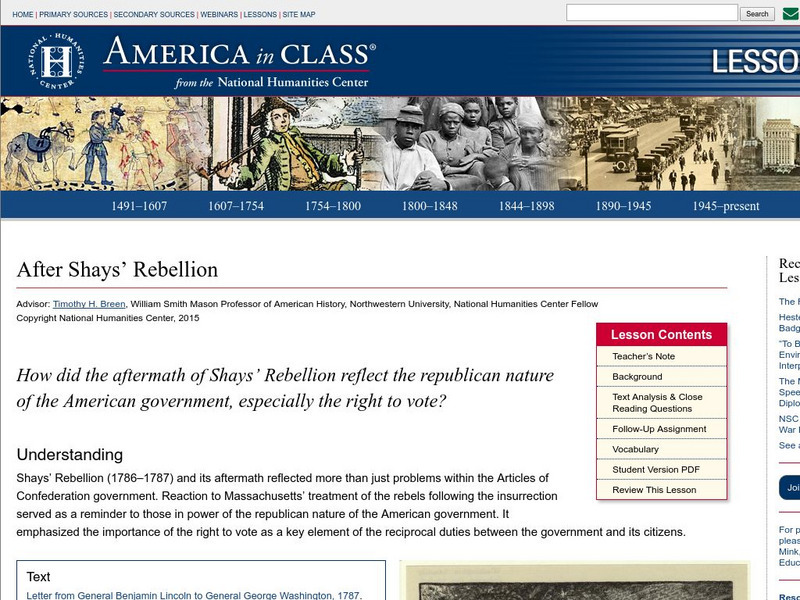National Humanities Center
National Humanities Center: Toolbox Library: The Making of African American Identity 1917 1968
Eighty-two primary sources explore African American identity in the 20th century. They examine segregation, migrations, protest, community, and what remained to be overcome.
National Humanities Center
National Humanities Center: Teacher Serve: The Varieties of Slave Labor
Daniel C. Littlefield, Professor of History at University of South Carolina, explores how plantation or slave labor differed according to location and period.
National Humanities Center
National Humanities Center: Teacher Serve: How to Read a Slave Narrative
This essay, written by English professor William L. Andrews, explores slave narratives and their influence in American literature in the late nineteenth century up to modern times.
National Humanities Center
National Humanities Center: Teacher Serve: Reconstruction and the Formerly Enslaved
What are the "big questions" of Reconstruction? Article provides an overview of the Reconstruction period when Americans debated rights and the nature of freedom and equality. It focuses on who was an American and how citizenship should...
National Humanities Center
National Humanities Center: Teacher Serve: Racial Uplift Ideology in the Era of "The Negro Problem"
History professor Kevin Gaines explores the idea that educated blacks are responsible for the welfare of the majority of the race and how the uplift ideology undermined collective social advancement.
National Humanities Center
National Humanities Center: Teacher Serve: Freedom's Story: Pigmentocracy
Trudier Harris, Professor of English at the University of North Carolina, takes a look at pigmentocracy, the distinctions that people of African descent in America make in their various skin tones. She suggests that there is a...
National Humanities Center
National Humanities Center: Teacher Serve: Segregation
Steven Lawson, Professor of History at Rutgers, explores how racial segreagation changed from before the Civil War up to the 1950s and the differences in segregation between the North and the South. Students should understand the legacy...
National Humanities Center
National Humanities Center: Teacher Serve: The Trickster in African American Literature
Trudier Harris, Professor of English at the University of North Carolina at Chapel Hill, explains the role of tricksters in African American literature.
National Humanities Center
National Humanities Center: Teacher Serve: African American Protest Poetry
Learn about African American protest poetry and what was motivating it. This article takes a look at protest poetry during slavery, during the period of segregation and Jim Crow, and after political obstacles to equality were removed....
National Humanities Center
National Humanities Center: Teacher Serve: The New Negro and the Black Image: From Booker T. Washington to Alain Locke
This essay explores how Booker T. Washington and others used the term "New Negro" as an attempt to recreate the race by suggesting education, refinement, money, assertiveness, and racial consciousness.
National Humanities Center
National Humanities Center: Teacher Serve: The Image of Africa in the Literature of the Harlem Renaissance
Overview of African Americans and their relationship to Africa. a myth which was embraced by the Harlem Renaissance.
National Humanities Center
National Humanities Center: Teacher Serve: Jazz and the African American Literary Tradition
Article explores the influence of jazz on African American literature from the early history of jazz, noted jazz artists, the black-white tensions within jazz, to its literary influence after World War II.
National Humanities Center
National Humanities Center: Toolbox Library: Becoming American: The British Atlantic Colonies, 1690 1763
Primary source documents on how the political relationship between the colonies and Great Britain changed from 1690 to 1763 and how the colonists responded.
National Humanities Center
National Humanities Center: America in Class: Making the Revolution: Crisis, 1763 1775
Primary source material, introductory notes, classroom discussion questions, and supplemental links focussing on the tumultuous times between 1763 and 1775 preceding the American Revolution.
National Humanities Center
National Humanities Center: America in Class: Making the Revolution: Rebellion: 1775 1776
Primary source material with introductory notes, classroom discussion questions, and supplemental links focussing on thoughts and events of rebellion in the colonies between 1775-1776 preceding the American Revolution.
National Humanities Center
National Humanities Center: America in Class: Making the Revolution: War, 1775 1783
Contains 9 sections of primary resource material, introductory notes, classroom discussion questions, and supplemental links to resources on the American Revolutionary War era from 1775 to 1783.
National Humanities Center
National Humanities Center: America in Class: Making the Revolution: Independence: 1783 1791
A collection of eight primary resources with introductory notes, classroom discussion questions, and supplemental links on the period following the Revolutionary War, 1783-1791 and the making of a new nation.
National Humanities Center
National Humanities Center: America in Class: Making of a Revolution: Constitution, 1787 1791
Seven sections of primary resource materials with introductory notes, classroom discussion questions, and supplemental links on the questions, discussion and debate over the U.S. Constitution.
National Humanities Center
National Humanities Center: America in Class: Becoming Modern: America in the 1920s: The Age
A collection of primary source material from the modern age, explores the 1920s and how it relates to today. Section includes introductory notes, classroom discussion questions, and supplemental links to related resources.
National Humanities Center
National Humanities Center: America in Class: Becoming Modern: America in the 1920s: Modernity
Primary resources from 1920s period offers a sense of cultural, social, political and economic thought during that time period. Includes notes, questions for discussion, and links to supplemental material.
National Humanities Center
National Humanities Center: America in Class: Becoming Modern: America in the 1920s: Machine
Primary resource material on the way innovatons and machines have modernized and changed America in the 1920s and beyond.
National Humanities Center
National Humanities Center: America in Class: Becoming Modern: America in the 1920s: Prosperity
Collection of six sections with primary resource material on the prosperity achieved during the 1920s explores consumerism, labor, and business. Includes notes, discussion questions and links to supplemental sources.
National Humanities Center
National Humanities Center: America in Class: Becoming Modern: America in the 1920s: Divisions
Collection of primary resources includes historical documents, film, literary texts, and works of art with notes and discussion questions on the conflict and divisions characterizing the 1920s.
National Humanities Center
National Humanities Center: America in Class: After Shays' Rebellion
Lesson on the aftermath of Shays' Rebellion as a reflection of the republican nature of American government and the right to vote. Includes primary resources with background information and strategies for analysis.








